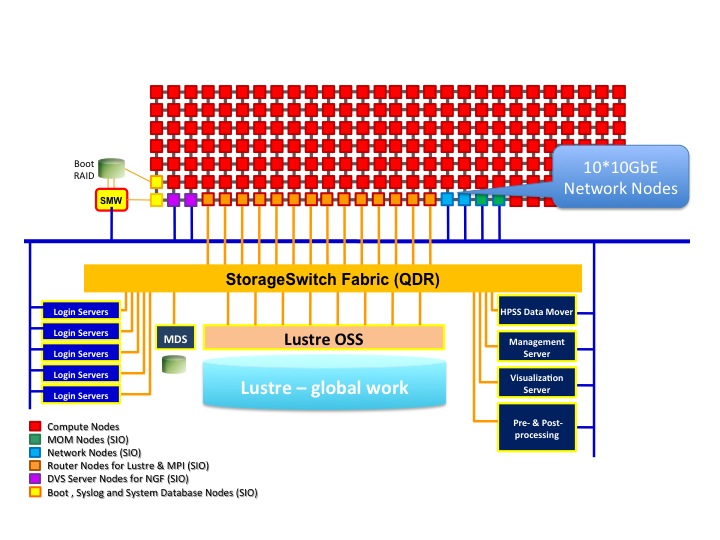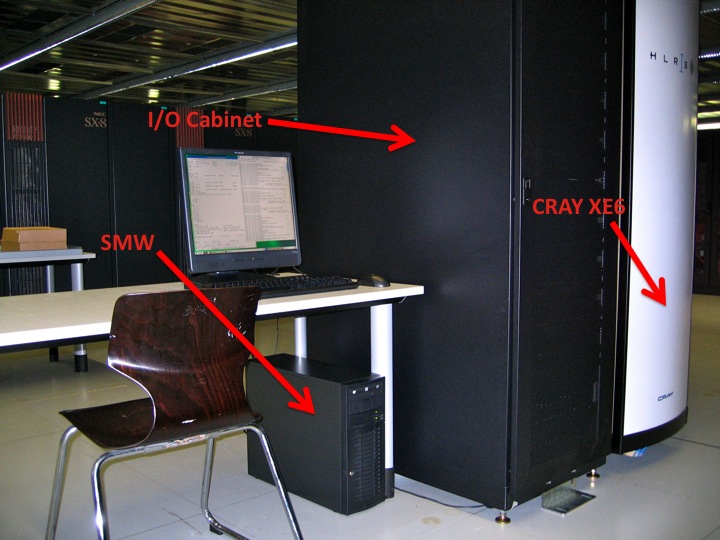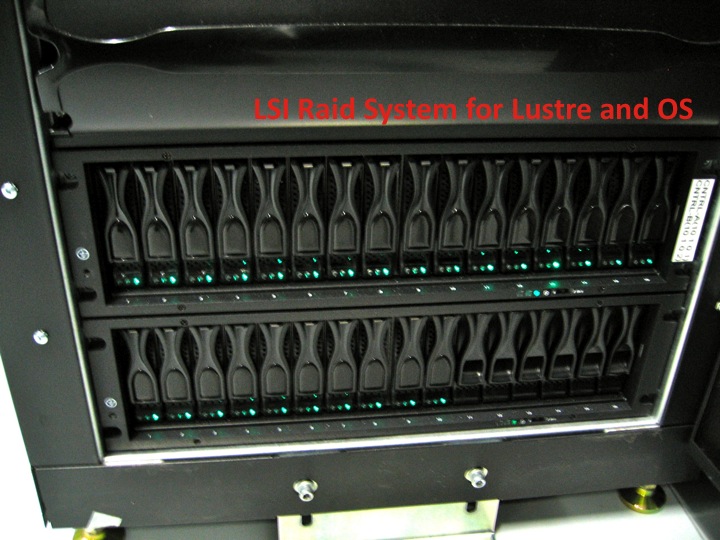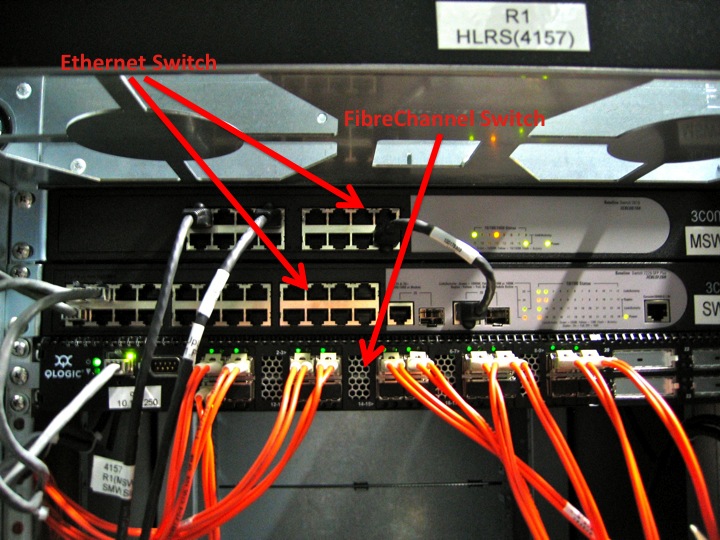- Infos im HLRS Wiki sind nicht rechtsverbindlich und ohne Gewähr -
- Information contained in the HLRS Wiki is not legally binding and HLRS is not responsible for any damages that might result from its use -
CRAY XE6 Hardware and Architecture: Difference between revisions
From HLRS Platforms
Jump to navigationJump to search
| Line 36: | Line 36: | ||
** are only available for user using the [[CRAY_XE6_Using_the_Batch_System| batch system]] and the Application Level Placement Scheduler (ALPS), see [https://fs.hlrs.de/projects/craydoc/docs/books/S-2496-31/html-S-2496-31/cnl_apps.html#section-5gdyxf87-oswald running applications]. | ** are only available for user using the [[CRAY_XE6_Using_the_Batch_System| batch system]] and the Application Level Placement Scheduler (ALPS), see [https://fs.hlrs.de/projects/craydoc/docs/books/S-2496-31/html-S-2496-31/cnl_apps.html#section-5gdyxf87-oswald running applications]. | ||
=== Conceptual Architecture === | |||
[[Image:Conceptual_Architecture_of_Hermit.jpg]] | |||
=== Features === | === Features === | ||
Revision as of 15:01, 6 October 2011
Hardware of Installation step 1
- 3552 compute nodes / 113.664 cores
- dual socket G34
- 2x AMD Opteron(tm) 6200 Series Processor (Interlagos) with 16 Cores @ 2.3 GHz
- 32MB L2+L3 Cache, 16MB L3 Cache
- HyperTransport HT3, 6.4GT/s=102.4 GB/s
- per socket ~150 GFLOP/s
- 32GB memory and 64GB memory nodes
- dual socket G34
- 96 service nodes (Network nodes, mom nodes, router nodes, DVS nodes, boot, database, syslog)
- High Speed Network CRAY Gemini
- Parallel Filesystem
- Lustre
- capacity 2.7 PB
- IO bandwith ~150GB/s
- infrastructure servers
- Users HOME filesystem ~60TB (BLUEARC mercury 55)
- special user nodes:
- external login servers
- pre-post processing nodes
- remote visualization nodes
Architecture
- System Management Workstation (SMW)
- system administrator's console for managing a Cray system like monitoring, installing/upgrading software, controls the hardware, starting and stopping the XE6 system.
- service nodes are classified in:
- login nodes for users to access the system
- boot nodes which provides the OS for all other nodes, licenses,...
- network nodes which provides e.g. external network connections for the compute nodes
- Cray Data Virtualization Service (DVS): is an I/O forwarding service that can parallelize the I/O transactions of an underlying POSIX-compliant file system.
- sdb node for services like ALPS, torque, moab, cray management services,...
- I/O nodes for e.g. lustre
- MOM (torque) nodes for placing user jobs of the batch system in to execution
- compute nodes and pre-post processing nodes
- are only available for user using the batch system and the Application Level Placement Scheduler (ALPS), see running applications.
Conceptual Architecture
Features
- Cray Linux Environment (CLE) 4.? operating system
- Operating System is based on SUSE Linux Enterprise Server (SLES) 11
- Cray Gemini interconnection network
- Cluster Compatibility Mode (CCM) functionality enables cluster-based independent software vendor (ISV) applications to run without modification on Cray systems.
- Batch System: torque, moab
- many development tools available:
- Compiler: Cray, PGI, GNU,
- Debugging: DDT, ATP,...
- Performance Analysis: CrayPat, Cray Apprentice, PAPI
- Libraries: BLAS, LAPACK, FFTW, PETSc, MPT,....





